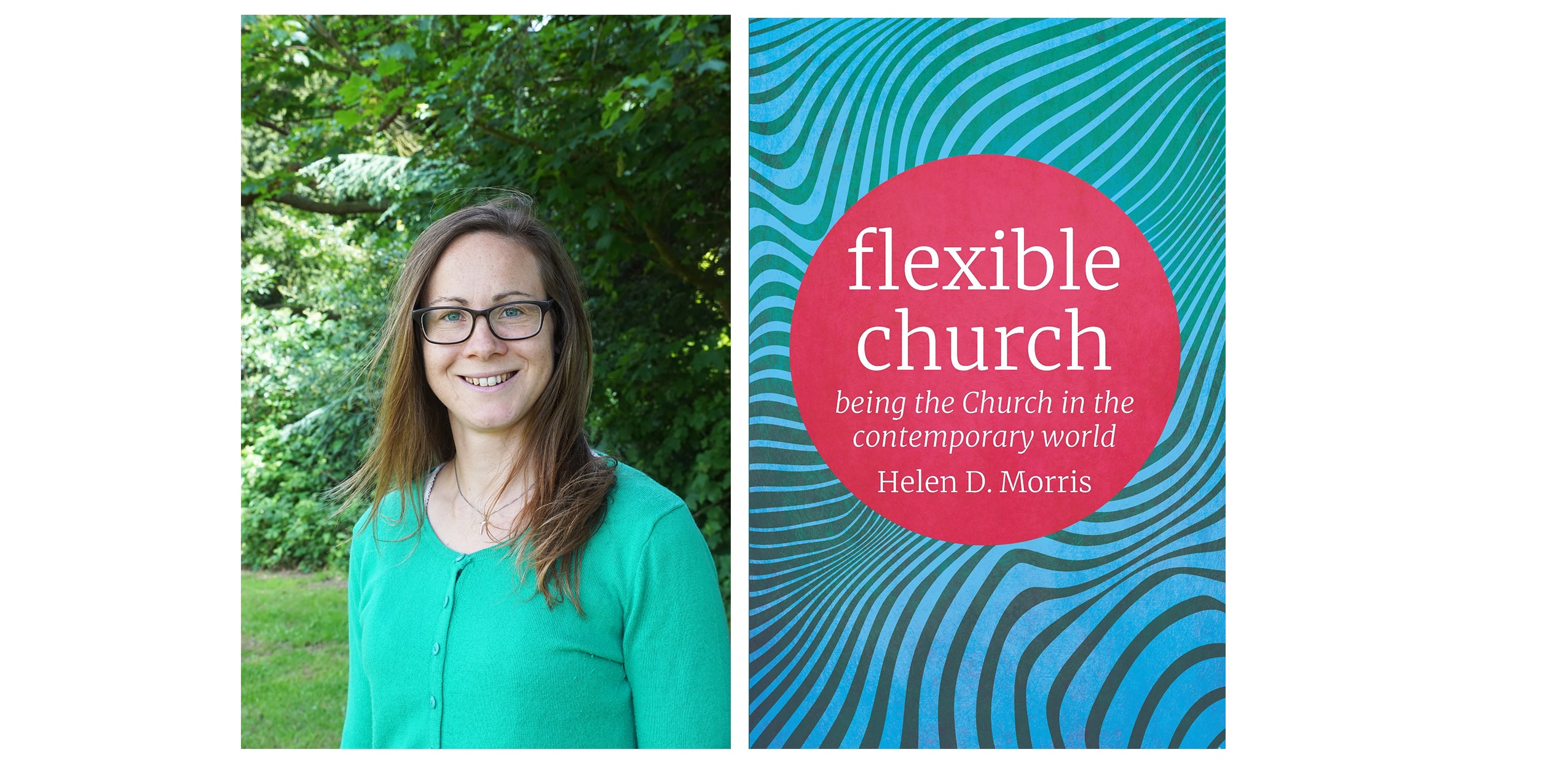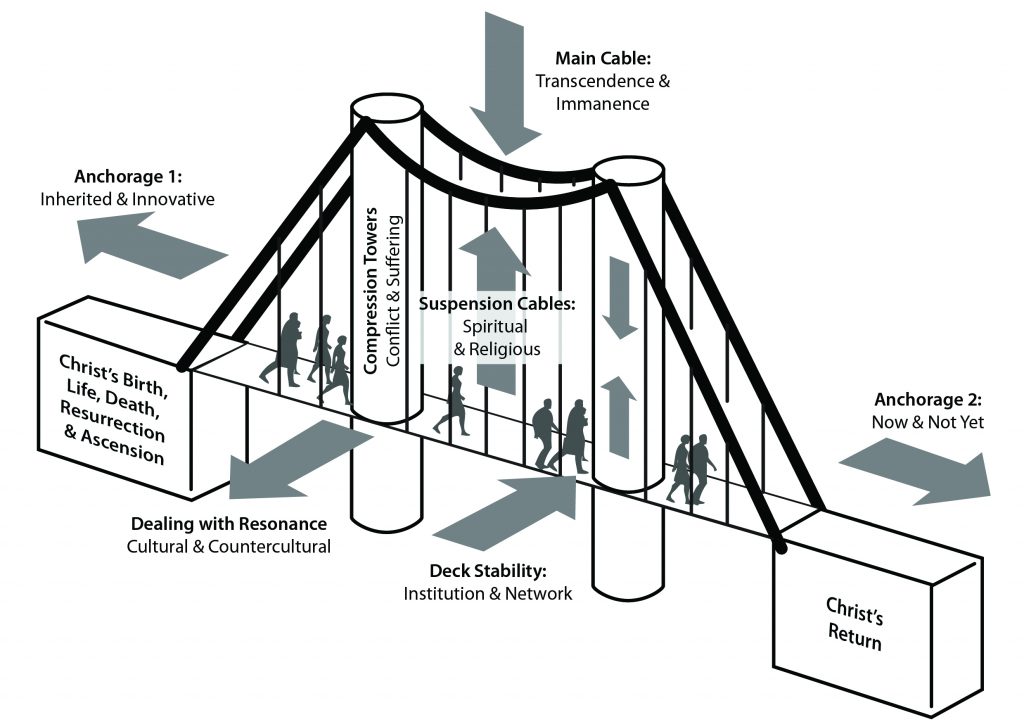“My hope is that this book encourages the contemporary church to maintain the flexibility and stability it needs to faithfully communicate and demonstrate the good news of Jesus in a range of different contexts.”
We’re delighted that Helen’s book ‘Flexible Church’ has just been released. Join us as we hear more about the book’s content and how it could enrich your understanding of church in contemporary culture.
Variations of church
“For me, the word ‘church’ brings back memories of the cold quiche and massive circular selections of sandwiches that used to be the standard fare of any church bring-and-share lunch. It also brings to mind charging around the church hall, causing mayhem after a Sunday service, playing newspaper hockey at youth club on a Friday night, and acting as an ugly sister in the Christmas church pantomime.
Church was familiar and it was family. As I grew up, I got involved in a church that consisted mainly of young adults, with a particular vision to reach the student community with the good news of Jesus Christ. Many aspects of church were the same. We sang songs of praise to God, we prayed, we were taught from the Bible, we drank coffee and chatted, but the style and feel were different: we met in the Students Union, not a church building; the services were more spontaneous, and louder; and there was a stronger emphasis on prophetic words and prayer for healing. Since then I’ve experienced many other expressions of church. I spent a couple of years in Thailand involved in a church where delicious Thai food was provided, with amazing ease and efficiency, after every Sunday service. I got involved in an Anglican Church in an ethnically mixed part of London, with the demographic variety of the area beautifully represented in the church. I’ve enjoyed Good Friday services at King’s College Chapel in Cambridge, listening to the choir sing the haunting Misere Dei, which contains the words of Psalm 51 in Latin. I’ve been to Messy Church gatherings and café church, enjoyed listening to the choir in a church in Uganda, and attended a Pentecostal gathering in Argentina.”
What does ‘church’ mean to you?
“Alongside experiencing different expressions of church, I also started hearing more about the nature of church. I was challenged by the reminder that the church is composed of people — it is not, first and foremost, a building or even a gathering (though gatherings, as I argue in my book, are essential). I came across authors arguing that culture has changed massively in the last 50 or 60 years, and the church hasn’t changed adequately in response. I read about Missional Church: what authors such as Michael Frost and Alan Hirsch thought church might look like if it minimised the cultural barriers that so easily creep in between the church and the wider population, whilst cultivating a Jesus-centred, kingdom-focused community. I got involved in Christians in Sport (CIS) and pondered the relationship between ‘parachurch’ agencies like CIS and the local church. I reflected on why those I invited to church were usually so reluctant to come and paid attention to how the church was portrayed on TV and film to get a better understanding of the wider world’s perception.”
The process of writing
“I then found myself choosing the topic of church for my Masters (MA) dissertation. I focused on the work of Michael Frost, whilst locating his work in the wider conversation of which he was a part. In this instance, I was focused on the missional focus of Frost’s (and other’s) writings and evaluated his contentions in light of Jesus’ parable of the Prodigal Son (or Prodigal Father, as Tim Keller has persuasively called it). In the process of my dissertation, I noticed an aspect of the work that I was engaging with that was, by way of two sides of the same coin, both a strength and weakness (as is often the case!). The movement was largely driven by practitioners. Mission was, positively, the primary focus and ecclesiology, questions regarding the nature and calling of the church, was addressed in a manner that seemed a bit more ad hoc. This caused me to wonder what the ecclesial assumptions were of the authors I was reading, alongside their explicit claims. I began to consider whether I could contribute in this area by bringing the ecclesiology of the authors I was engaging with into sharper focus.”
Church in contemporary culture
“These musings led me to continue exploring the church in contemporary culture in my doctoral studies. By this point, the Mission-Shaped Church report had been released and was having a big impact nationally and internationally. Fresh Expressions had been initiated, and a variety of fresh expressions of churches were being launched across the country. Rather than Michael Frost, for my PhD I focused on UK authors, in particular Pete Ward, Michael Moynagh and Stuart Murray Williams, whilst locating their work in a larger conversation that I referred to as ‘re-contextual church’ (a slight, but deliberate, amendment to Moynagh’s phrase ‘new contextual’ church). My focus was ecclesiology. I decided to assess the movement’s ecclesial assumptions and explicit assertions in light of Paul’s body of Christ metaphor, as utilised in Romans, 1 Corinthians, Ephesians, and Colossians. My PhD supervisor would often remind me that, if you knew where you’d end up before you started, it wouldn’t be research. This reminder was helpful to me as I was unsure what I’d conclude until quite late on in the process and, still today, have unresolved questions!”
Church as a suspension bridge
“What I concluded was that, for churches to be faithful to Jesus and best engage with their context, there are a series of tensions that they should seek to maintain. Identifying these tensions led me to coin a new metaphor for church, the church as a suspension bridge. The idea is that, just as the tensions in the supporting cables provide the stability and flexibility that a suspension bridge needs, so maintaining the tensions conveyed through Paul’s body of Christ texts is essential for the health and effectiveness of the church.”
Image: Church as a suspension bridge by Michelle Barnett, taken from Flexible Church.
Thanks to SCM Press
“I was grateful when SCM were willing to publish my research and the result is Flexible Church. My hope is that this book encourages the contemporary church to maintain the flexibility and stability it needs to faithfully communicate and demonstrate the good news of Jesus in a range of different contexts.”
Buy your copy now
Flexible Church is available now for purchase.
To buy your copy, follow this link: Flexible Church, Helen Morris | SCM Press.





